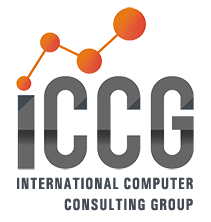Food and beverage companies face another pivotal year as the effects of the Covid-19 pandemic is forcing businesses to reevaluate their supply chain and operations strategy. To combat the challenges of supply chain disruption, shifting consumer demand, and market uncertainty, many organizations have turned to technology to promote resiliency and galvanize their business processes for the year ahead.
Below are five technology trends that experts anticipate will gain popularity in the years ahead as manufacturers prioritize agility and resilience over reactivity.
Trend #1: Rise to the cloud
The most successful enterprises achieve high levels of agility with the support of a cloud platform. The popularity of the cloud will continue to grow in 2022, as the market observes the benefits of the agility, connectivity, and scalability enabled by cloud technology. Cloud-based technology also makes digital transformation easier by assisting IT teams in making integrations and customizations less laborious.
Trend #2: More options with omnichannel
Food and beverage manufacturers have been historically dependent upon retailers to sell their goods. The paradigm is now shifting with the help of companies like Amazon, but the pandemic has also triggered an uptick in omnichannel distribution. Many companies are introducing B2C commerce for food and beverages, which creates less dependence on existing distribution channels while addressing the needs of the modern consumer.
Trend #3: Industry 4.0 adoption
Industry 4.0 and the Internet of Things (IoT) have been around for a while but, like the cloud, many manufacturers have been slow to adopt aligning technologies. Factory equipment is already fitted with smart sensors that collect data, but the upward trajectory of Industry 4.0 adoption will help manufacturers turn that data into action. Moving forward, businesses will prioritize planning and proactivity with enabling technology that provides a holistic view of data and offers a platform that can turn data into intelligence, and later, a competitive advantage.
Trend #4: Look ahead with a data-driven strategy
It’s one thing to collect data. It’s another to analyze and share it across the enterprise and supply chain. Next year, more manufacturers will change the way they collect and use data to develop better processes, support sustainability, and optimize their entire operation. From image recognition to determine more accurate product shelf-life, to enhanced product traceability, more accessible data will serve both the enterprise and its consumers.
Trend #5: Better transparency
Trends 1-4 address the story of resilience and sustainability. Once that foundation is built, manufacturers will look for ways to tell that story to partners and consumers alike. Next year, transparency will be top of mind for businesses with a long-term growth plan. Initiatives to help consumers track their food, ingredients, and nutritional value via scannable labels are just the tip of the iceberg. Consumers are willing to pay more for transparency, and manufacturers will be seeking this premium for their products by fulfilling demand.
Learn more about how ICCG can help. Questions about how ICCG can help you? Let us know here.


